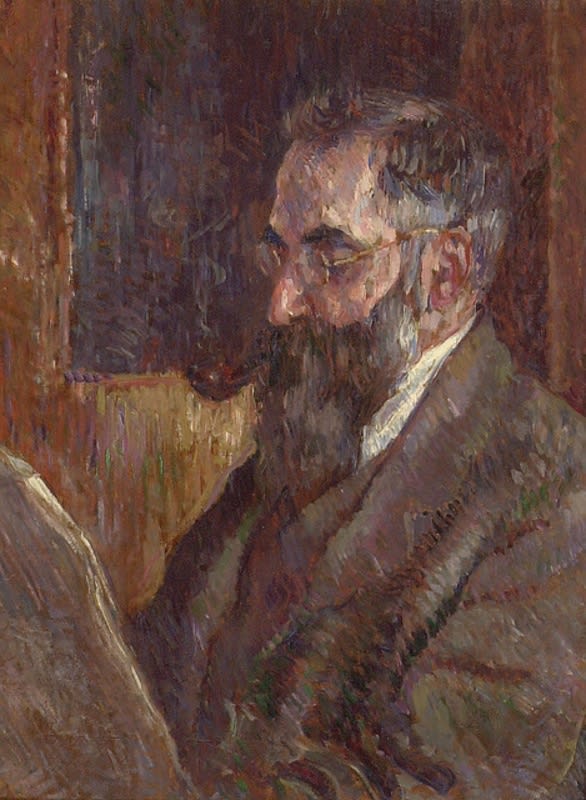Painter Lucien Pissarro was born into a Jewish family in Paris, France on 20 February 1863, the eldest son of Impressionist painter Camille Pissarro; his only child was the painter Orovida Pissarro. He grew up in France, mixing frequently with artists from his father’s circle and was particularly inspired by the work of Signac and Seurat. In 1886, he exhibited at the last of the Impressionist exhibitions and from then on (until 1894) showed with the Salon des Indépendants. He first visited Britain in 1870–71 during the Franco-Prussian War, returning to France in 1883–84, then settling permanently in London in 1890.
In 1894, together with his wife, Esther (1870-1951, née Bensusan), a wood-engraver, designer, and printer, he established the publishing house, Éragny Press, based in Epping Forest in Essex, and named after the French village, where the family had lived since the 1880s. This enabled him to explore and experiment with printmaking and book design, though he was primarily considered a landscape painter. In 1906 he joined the New English Art Club, where he exhibited landscapes of the British countryside including Surrey, Dorset, and Devon. In 1907 he was invited by Walter Sickert to join the Fitzroy Street Group, and later with Sickert went on to become a co-founder of the Camden Town Group. In 1919, he formed the short-lived Monarro Group, aiming to show artists inspired by Monet and his father Camille Pissarro. From 1922 to 1937 he painted regularly in the south of France, also travelling to Derbyshire, south Wales, and Essex and between 1934 and 1944 exhibited regularly at the Royal Academy. He died in Hewood, Dorset, England on 10 July 1944, bequeathing his collection to the Ashmolean Museum, Oxford. He is also represented in numerous other UK public collections including the Courtauld, the Government Art Collection, Leeds Art Gallery, the University of Hull and the William Morris Gallery.


